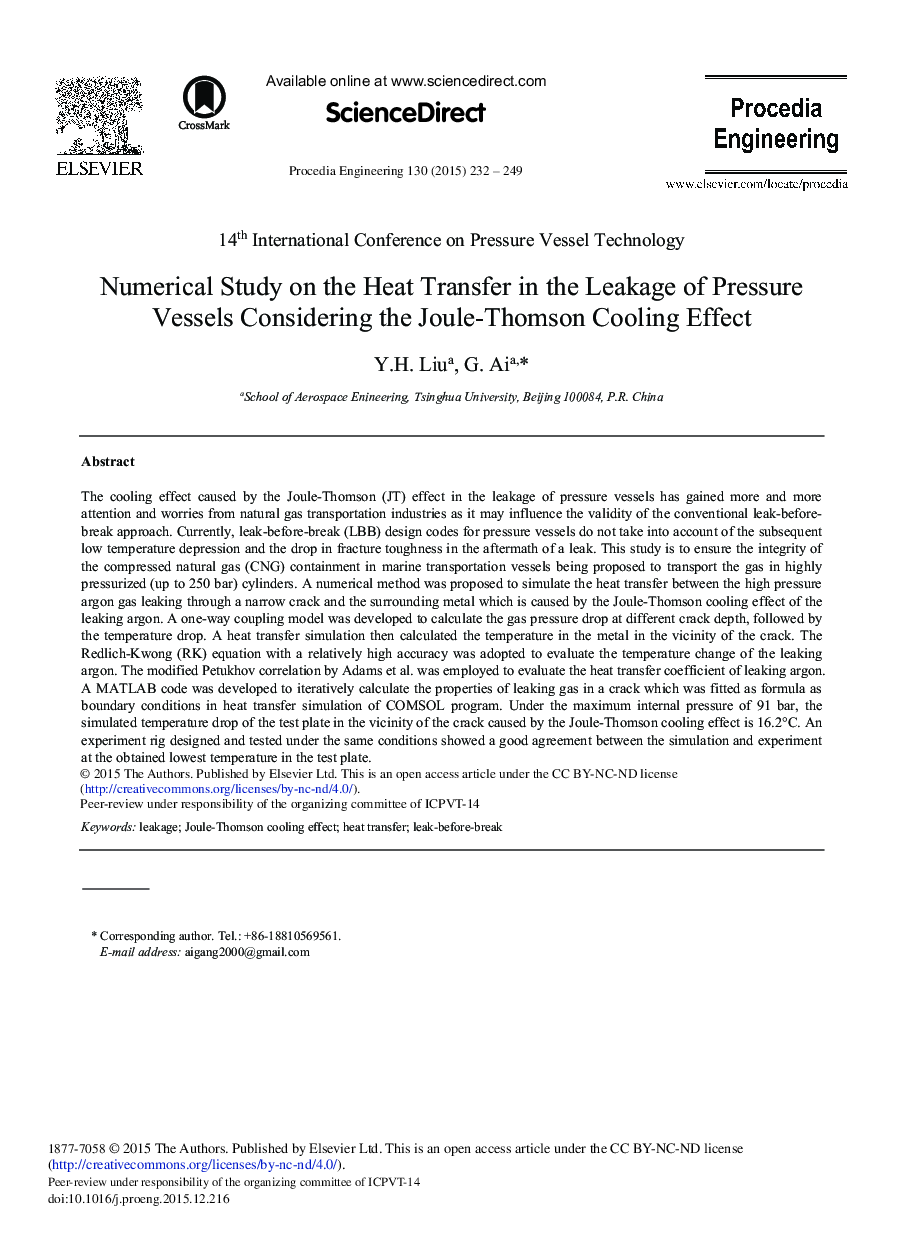| Article ID | Journal | Published Year | Pages | File Type |
|---|---|---|---|---|
| 854537 | Procedia Engineering | 2015 | 18 Pages |
The cooling effect caused by the Joule-Thomson (JT) effect in the leakage of pressure vessels has gained more and more attention and worries from natural gas transportation industries as it may influence the validity of the conventional leak-before-break approach. Currently, leak-before-break (LBB) design codes for pressure vessels do not take into account of the subsequent low temperature depression and the drop in fracture toughness in the aftermath of a leak. This study is to ensure the integrity of the compressed natural gas (CNG) containment in marine transportation vessels being proposed to transport the gas in highly pressurized (up to 250 bar) cylinders. A numerical method was proposed to simulate the heat transfer between the high pressure argon gas leaking through a narrow crack and the surrounding metal which is caused by the Joule-Thomson cooling effect of the leaking argon. A one-way coupling model was developed to calculate the gas pressure drop at different crack depth, followed by the temperature drop. A heat transfer simulation then calculated the temperature in the metal in the vicinity of the crack. The Redlich-Kwong (RK) equation with a relatively high accuracy was adopted to evaluate the temperature change of the leaking argon. The modified Petukhov correlation by Adams et al. was employed to evaluate the heat transfer coefficient of leaking argon. A MATLAB code was developed to iteratively calculate the properties of leaking gas in a crack which was fitted as formula as boundary conditions in heat transfer simulation of COMSOL program. Under the maximum internal pressure of 91 bar, the simulated temperature drop of the test plate in the vicinity of the crack caused by the Joule-Thomson cooling effect is 16.2 °C. An experiment rig designed and tested under the same conditions showed a good agreement between the simulation and experiment at the obtained lowest temperature in the test plate.
